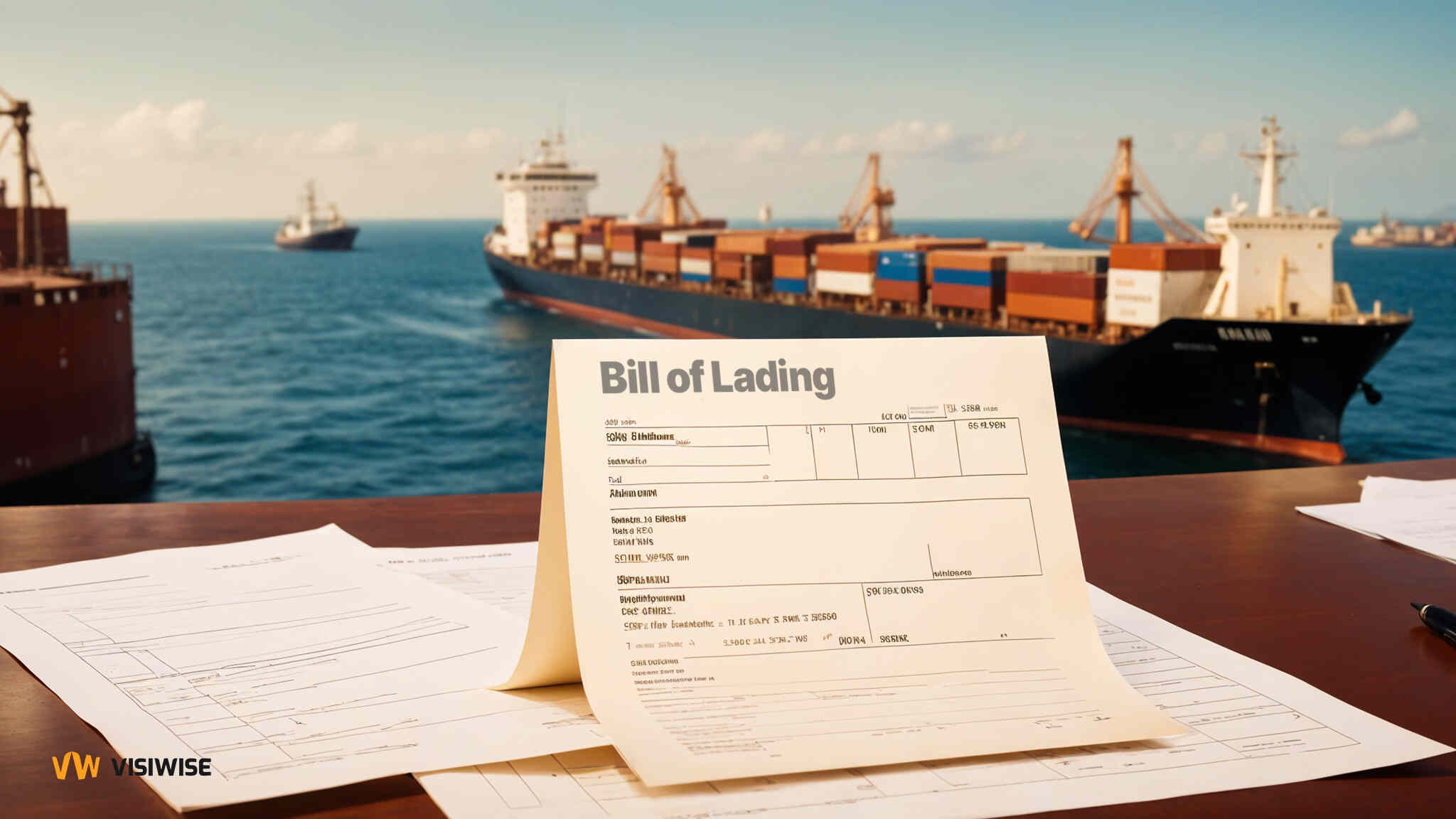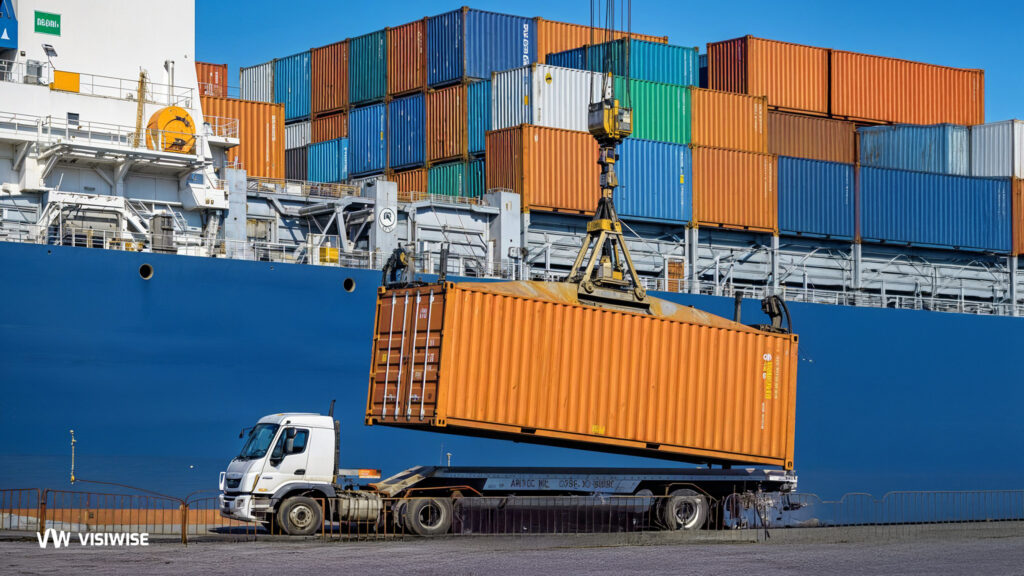The bill of lading (B/L) is a crucial document in the maritime industry, serving multiple roles that are vital for the smooth operation of international trade. It is more than just a receipt for goods; it is a document of title and a contract of carriage between the shipper and the carrier. Understanding the intricacies of the bill of lading is essential for anyone involved in shipping, logistics, or international trade.
Definition and Functions of a Bill of Lading
A bill of lading is a legal document issued by a carrier to a shipper, detailing the type, quantity, and destination of the goods being transported. It acts as:
- A Receipt: It acknowledges that the goods have been received on board the ship in good condition.
- A Document of Title: It provides ownership rights over the goods, enabling the transfer of ownership while the goods are in transit.
- A Contract of Carriage: It outlines the terms and conditions under which the goods are transported.
Types of Bills of Lading
There are several types of bills of lading, each serving different purposes depending on the nature of the cargo and the requirements of the shipper and consignee:
Inland Bill of Lading:
Used for domestic transportation by road or rail within a country before or after ocean transport.
Ocean Bill of Lading:
Issued for goods transported by sea; it serves as a receipt, document of title, and contract of carriage.
Through Bill of Lading:
Covers the transport of goods across multiple modes of transport (e.g., road, rail, sea) from the point of origin to the final destination.
Negotiable Bill of Lading:
Can be transferred to a third party; whoever holds the original document has ownership of the goods.
Nonnegotiable Bill of Lading:
Specifies a particular consignee and cannot be transferred to another party.
Claused Bill of Lading:
Indicates that the goods or packaging were damaged or did not meet the terms of the contract when received by the carrier.
Clean Bill of Lading:
States that the goods were received in good condition, without any damage or shortages.
Uniform Bill of Lading:
Standardized bill of lading used in the U.S. for interstate shipments, detailing terms and conditions uniformly across states.
The Process of Generating a Bill of Lading
The bill of lading is typically generated by the shipping company or its agent once the goods have been loaded onto the vessel. The process involves:
- Booking Confirmation: The shipper books space on the vessel, providing details of the cargo.
- Inspection and Loading: Once the goods are inspected and loaded, the carrier issues the bill of lading, confirming receipt and the condition of the cargo.
- Issuance of the Document: The B/L is usually issued within 24 to 48 hours after loading, depending on the carrier’s procedures and the complexity of the shipment.
Date of Issue and Its Importance
The date of issue on a bill of lading is critical as it often determines the start of the shipment’s transit period. It also impacts:
- Payment Terms: In many cases, payment under a letter of credit is tied to the date of issue.
- Liability and Risk Transfer: The date marks the transfer of risk from the shipper to the carrier, making it a key factor in insurance claims and disputes.
Challenges and Considerations
- Fraud and Misuse: Given its importance as a document of title, bills of lading are sometimes subject to fraud, with counterfeit documents used to claim goods.
- Discrepancies: Any inconsistencies between the B/L and the actual condition or quantity of the cargo can lead to disputes, delays, and financial losses.
- Digitalization: The industry is gradually moving towards electronic bills of lading (e-B/L), which offer advantages in speed, security, and transparency but also require adjustments in legal and operational frameworks.
When is a Bill of Lading Generated in Shipping?
The bill of lading (B/L) is a crucial document in the shipping and logistics industry, serving as a receipt of goods, a document of title, and a contract of carriage between the shipper and the carrier. The generation of the bill of lading typically occurs after the cargo has been loaded onto the vessel but before the ship sets sail.
Once the cargo is loaded and the necessary details, such as the description of goods, quantity, and destination, are verified, the carrier or their agent issues the bill of lading. This document is then provided to the shipper as proof that the carrier has received the goods in good condition. The timing of this process can vary depending on the shipping company’s procedures, the complexity of the cargo, and other logistical factors.
How Long Does It Take to Receive a Bill of Lading?
The time it takes to receive a bill of lading can vary widely. In many cases, the bill of lading is issued within a few hours to a day after the cargo is loaded onto the vessel. However, this timeline can be influenced by factors such as:
- Port Procedures: The efficiency of port operations can affect how quickly a bill of lading is issued. Ports with streamlined processes may facilitate quicker issuance.
- Documentation Accuracy: Any discrepancies or incomplete information in the shipping documentation can delay the generation of the bill of lading.
- Customs Clearance: In some cases, customs clearance procedures may need to be completed before the bill of lading can be issued, potentially causing delays.
What is the Date of Issue of the Bill of Lading?
The date of issue of the bill of lading is a critical piece of information as it often determines the start of the contract of carriage. This date is typically the day when the goods are loaded onto the vessel and the bill of lading is physically or electronically issued by the carrier.
The date of issue is significant for several reasons:
- Legal Implications: It can be used to determine the date from which certain obligations and liabilities of the carrier commence.
- Payment Terms: In trade finance, the date of issue is often a key date for triggering payment terms under a letter of credit.
- Cargo Tracking: It helps in tracking the progress of the shipment and estimating the delivery date.
What is the Bill of Lading Before Shipment?
Before the actual shipment, a document known as the "pro forma bill of lading" or a "draft bill of lading" may be prepared. This draft contains all the essential details that will be included in the final bill of lading, such as the shipper’s and consignee’s details, description of goods, and destination.
The pro forma bill of lading is often used for:
- Verification: Shippers use it to verify that all details are correct before the final document is issued.
- Customs and Regulatory Compliance: It may be required for pre-shipment customs clearance or to comply with certain regulatory requirements.
- Financial Documentation: It can be used as part of the documentation required for securing a letter of credit or other financing arrangements.
The final bill of lading, issued after the cargo is loaded, will reflect the actual details of the shipment, with any necessary adjustments made from the draft.
Differences Between Original and Telex-Release Bill of Lading
Original Bill of Lading (B/L):
- Physical Document: The original B/L is a physical document issued in multiple copies, typically in sets of three originals, and can be physically transferred between parties.
- Transfer of Ownership: The holder of the original B/L has the right to claim ownership of the goods. The document is negotiable, meaning that ownership can be transferred to another party by endorsing the document.
- Release of Goods: The carrier or its agent releases the goods at the destination port only when the original B/L is presented. This ensures that the goods are released to the rightful owner.
- Security: Since the original B/L is a physical document, it provides a high level of security. The goods cannot be released without presenting this document, minimizing the risk of unauthorized release.
- Delays: There may be delays in receiving the original B/L due to the time taken for physical courier services, especially in cases where the shipment arrives before the B/L.
Telex-Release Bill of Lading:
- Electronic Authorization: A telex-release B/L refers to a situation where the original B/L is surrendered by the shipper or their agent at the origin port. The carrier then sends an electronic message (historically through telex, now via email or other electronic means) to the destination port, authorizing the release of goods without the need for the physical document.
- Non-Negotiable: Once a telex release is issued, the B/L becomes non-negotiable. The ownership of the goods cannot be transferred by endorsing the document, as no original document is required to claim the goods.
- Faster Release: Since no physical document needs to be presented at the destination, the release of goods can happen more quickly. This is particularly useful in cases where the shipment arrives before the B/L or when the original B/L is lost.
- Reduced Security: While convenient, a telex-release may pose a slightly higher security risk compared to an original B/L. The goods can be released to the consignee without a physical document, which might increase the risk of fraud if proper verification is not done.
- Cost and Convenience: Telex release can reduce costs associated with couriering original documents and can be more convenient in fast-paced transactions.



